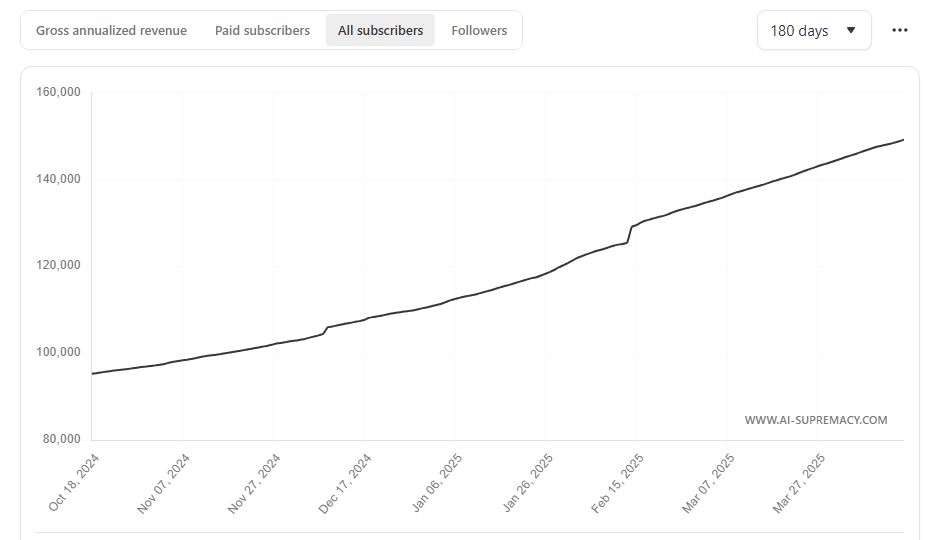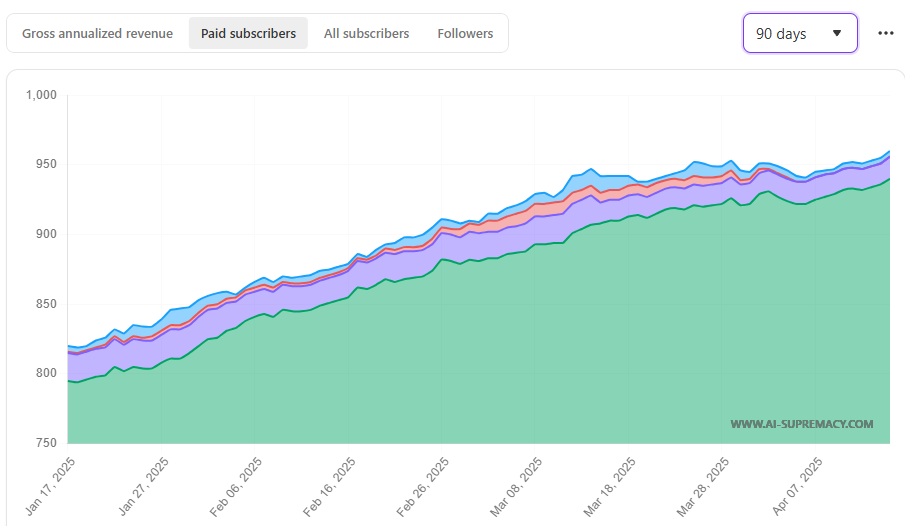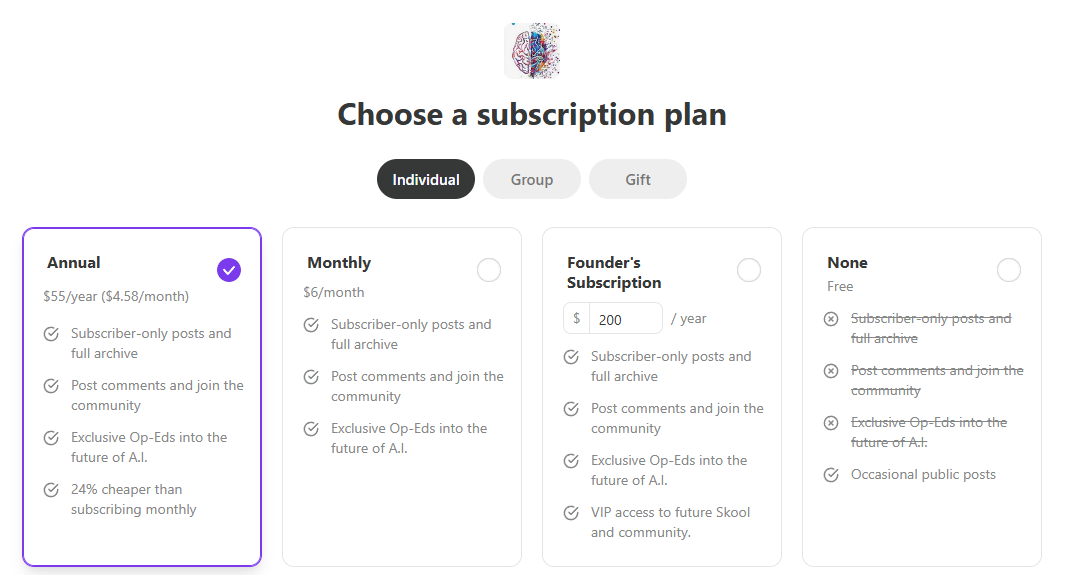Google's Dolphin Gemma, Milestones and Building an Ethical Publication 🐬
Can AI help us understand Dolphin lingo? What does it mean to run a Newsletter ethically? Where is AI Supremacy in its goals.
Please answer the Polls today about this Newsletter, they help decide some of my editorial challenges.
Today’s piece is part of our section called Benefactor, where we explore AI for good topics. Talking to dolphins with AI falls in that category. 🥥🌴🌺🌅🌊
Welcome Back,
I’ve been covering the AI beat of new models, AI news, AI startups and everything related for over three years now, before ChatGPT came out. It’s been super fun.
I’m super grateful to what we have achieved, the guest contributors we can host, the guides we can build, and the readers that make this all possible. I’m blessed to be able to do this. I would still be doing this, probably regardless of whatever happens.
Today I have an important Poll (🗳️) where you get to share your input that will help determine our future. This will help me determine the optimal ratio of paid to free articles I can provide. And if I should do more native sponsorships (something I’ve only been doing in extreme moderation).
As many of my readers tell me they are struggling with information overload, AI news saturation and the like, today’s topic is light and on the more benevolent uses of LLMs. Decoding Dolphin language!
How Google AI is helping decode dolphin communication
Easily one of my favorite AI stories of the week: (more below, if you want to skip my publication sharing details, scroll down 👇🏻)
📈 Trending Articles 🔥
Is AGI a hoax of Silicon Valley?
Gemini vs ChatGPT Deep Research destroyed my expectations
The AI Semiconductor Landscape
This is a high frequency publication, our best work is available to paid readers only. See the archives.
AI Supremacy is about to cross 150,000 readers.
Everyone runs their Newsletter in their own way
During this period of the last 3 years of making an AI Newsletter, I’ve witnessed my peer publications on this platform (Tech category: look at their prices) raise their subscription prices between 50-70% mostly for their primarily U.S. based paid readers. More on how much the average Tech publication costs a bit later on.
Here’s the thing, I don’t want to do that. I don’t feel comfortable with that trend.
Here’s why:
While I do run a business, monetization isn’t my primary concern. Currently articles to free readers goes behind a paywall after a few days automatically.
I run an AI Newsletters because I enjoy it and I’d like to keep my prices as low as possible to be able to reach more global readers, even if it means making less revenue and be an accessible AI voice in the mix for my readers some of whom might live countries outside of the U.S. without that level of economic privilege or a salary in U.S. dollars. 🌍
For less than $2 a week, consider becoming a premium reader and getting full-access:
As a free reader, what do you prefer? 🤗
I’d like to better understand how my readers are aligned with paid subscriptions or tolerating Native sponsorships that are aligned as possible (Ads in the header).
While I don’t enjoy sales related to Ads, in many cases I find that I actually enjoy promoting AI startups and their products that might be valuable to my readers, especially when I’m giving early stage entrepreneurs a boost. I don’t consider it particularly invasive advertising since I do them in extreme moderation, but maybe you do? (Tl;dr answer the polls).
Less paywalled content would mean me doing more of these little Native Sponsorships in the header. Currently as you may have noticed a lot of my content is paywalled. Currently as it stands, content between Monday to Thursday is mostly paywalled. So as a casual free reader, what would you prefer?
I am considering having more free articles with Native Sponsors (Ads), in the header to free readers, paid subscribers wouldn’t see the Ads.
Right now, I make about 10-15% of my revenue from Native Sponsorships typically with a B2B advertiser who is usually an AI startup with a product I think my audience might relate to well. If this went up to 25% or how I generate income, it would be a more healthy balance.
I make sure the Ad feels more like a “Native sponsorship” and that the advertiser is relevant, valuable and aligned to the topics I cater to for my readers. Typically they are an AI tool or an established SaaS company with an AI related product. Basically a call-to-action that I genuinely think my readers might be into! 📌 It should be targeted, not feel disruptive and potentially add-value. It should also be minimalistic, outside the view of paid subscribers and be useful.
AI Supremacy is a Reader centric Publication ⚗️
Please answer the poll above (and below) which model you prefer, as I want to cater to the preferences of my readers.
Native Sponsorships typically appear in the header to free readers (visible in an Email, but not on the website) in a very short format, so you clicking on these helps me survive economically allowing me to charge less on the paid subscriptions. It’s a weird situation for publications on this platform especially in tech, where Ads are a huge potential monetization opportunity.
Substack itself has an ambivalent relationship with Ads to say the least while paid subscriptions on the whole don’t increase very quickly for publications like mine (see the graph below). This is all an incredible balancing act for me that wants to run my Newsletter as ethically as possible, while being as accessible as possible, while also running it as a business that can support my family. 🤹🏻♀️ Including a suite of Newsletters around emerging tech.
Here’s how I’d like to Operate my Publications
Add value
Be accessible 🌏
Don’t price gouge (e.g. constantly raising sub prices)
Try to run my Newsletter with ethics
Discovering emerging tech, not just AI (see full suite of my different Newsletters)
Following the innovation trends 💡
Dedicated to following the AI news cycle
Supporting other writers ✏️
Cover AI with unparalleled variety of niches and perspectives
Diversify revenue while enjoying the experience
Cater to global readers, not just U.S. based ones (geographically and income bracket agnostic)
Don’t run “too many” Ads
All to say, doing the above is harder than it looks. I commit to doing it to the best of my ability.
To keep enjoying it for the right reasons 💓
While it is a business and my primary job, I want to keep enjoying it and doing what is right. This ultimately means serving my readers better.
My goal is to reach 1,500 paid subscribers, currently at 940, so you being a premium reader you are literally subsidizing the publication to readers outside the U.S. who work in countries with a currency far less valuable than the U.S. dollar.
If I reach 1,500 paid readers or $100,000 in ARR whichever comes first, (which I consider a minimum living wage), I pledge to reduce my price to $5 a month or $45 a year (the lowest amount possible), eventually hopefully to make the paid support entirely voluntary. That’s the dream after reaching “1,000 true fans”, that many Newsletters here already do. While I want to grow and scale the business, me staying true to my own values is also fairly important in the process.
I want this to stay a labor of love as I’ve seen how paid subscription pressure can change how people operate, what they write, how they report, and how they do independent journalism. 🌊
This is in my view, is the most ethical way to run my publication. This is my full-time job, I do not have other sources of income. Thanks for being a reader.
Currently at 940 of 1,500 Paid Subscribers, or 62.8% to my Goal
The average Tech publication in the Top 40 charges $26.60 a month, AI Supremacy currently costs $6 a month, even less if you have a yearly subscription.
My current annual price is closer to $1 a week. I don’t like to talk about business here, but I wanted you to have more transparency into how I’m trying to run AI Supremacy, my flagship publication and actually for you to have a bigger say! Now let’s get into the article of the day:
Google built an AI model for understanding dolphins
Google’s AI research lab, Google DeepMind, says that it has created an AI model that can help decipher dolphin vocalizations, supporting research efforts to better understand how dolphins communicate.
As of mid April, 2025 DolphinGemma is in its early stages. DolphinGemma is a large language model developed by Google, is helping scientists study how dolphins communicate — and hopefully find out what they're saying, too.
It’s pretty incredible.
Generating sound programmatically requires a human to write code, but LLMs create instructions for making new sounds independently, based on what they’ve learned from data.
The model, created in partnership with Georgia Tech and the Wild Dolphin Project (WDP), learns the structure of dolphins’ vocalizations and can generate dolphin-like sound sequences
Mothers and calves, for example, use distinct signature whistles—unique names—to call out to each other.
Can AI help us decipher Animal language?
For decades, understanding the clicks, whistles and burst pulses of dolphins has been a scientific frontier. What if we could not only listen to dolphins, but also understand the patterns of their complex communication well enough to generate realistic responses?
Using AI is also being used to help us understand the lingo of Whales, for example.
The Wild Dolphin Project (WDP) has been Key
DolphinGemma leverages decades of meticulously labeled audio and video data collected by WDP since 1985. The Wild Dolphin Project (WDP), is a nonprofit that studies Atlantic spotted dolphins and their behaviors. Built on Google’s open Gemma series of models, DolphinGemma, which can generate “dolphin-like” sound sequences, is efficient enough to run on phones, Google says.
This summer, WDP plans to use Google’s Pixel 9 smartphone to power a platform that can create “synthetic dolphin vocalizations” and listen to dolphin sounds for a matching “reply.” WDP previously was using the Pixel 6 to conduct this work, Google says, and upgrading to the Pixel 9 will enable researchers at the organization to run AI models and template-matching algorithms at the same time, according to Google. So DeepMind is doing PR here for Google Pixel smart phone sales as well.
Dolphin sounds fall into a few specific categories, such as whistles, squawks, and clicking buzzes, each linked to a different context and behavior. By analyzing these sounds, researchers can detect patterns and structure, just like human language.
Whittles
Squawks
Clicking buzzes
By blending decades of marine biology with machine learning, Google has developed an AI that talks to dolphins—or at least starts to understand and mimic their remarkably complex vocalizations.
Just like I’ve reported before in AI’s usage in astronomy, AI can literally help us understand the universe better. We still know so little about the oceans.
Keep reading with a 7-day free trial
Subscribe to AI Supremacy to keep reading this post and get 7 days of free access to the full post archives.






